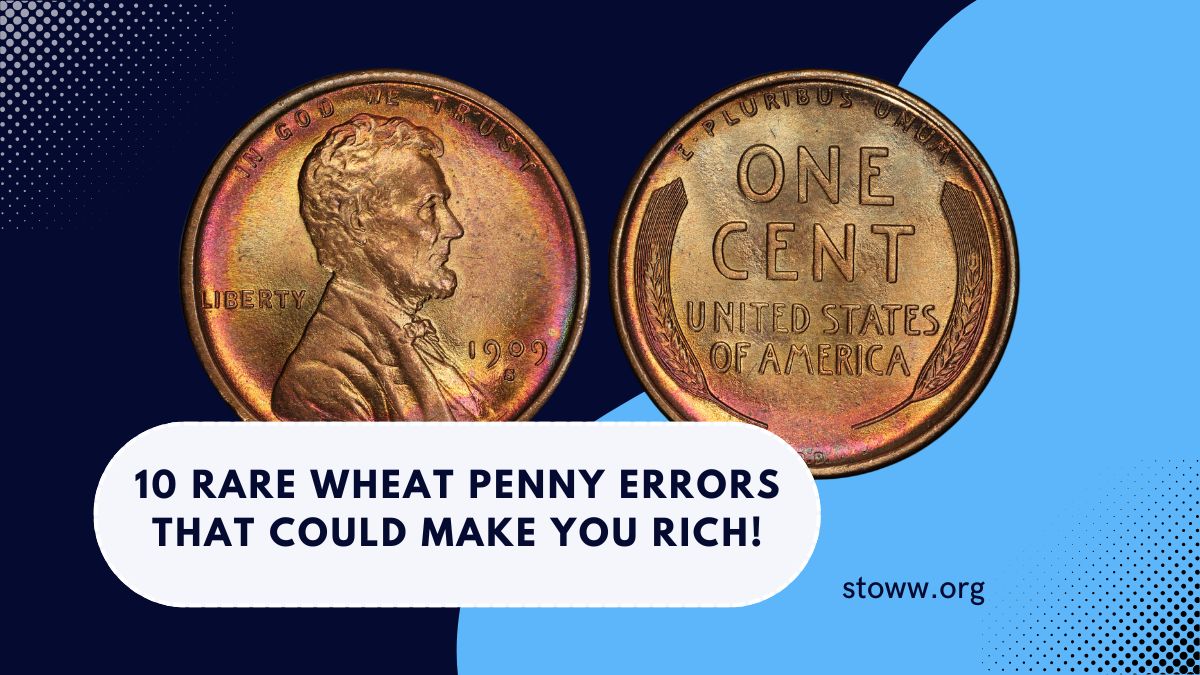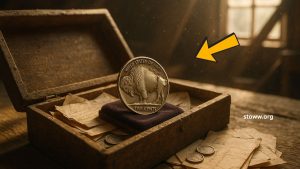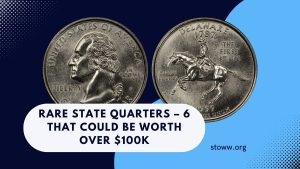If you’ve ever tossed a penny aside thinking it wasn’t worth much, think again. Some Lincoln Wheat Pennies, minted between 1909 and 1958, contain rare minting errors that collectors will pay thousands—or even millions—for.
Whether you’re a coin enthusiast or just curious about what might be hiding in your piggy bank, this guide uncovers 10 rare Wheat Penny error coins that could bring you big money.
1943 Copper Wheat Penny
During World War II, pennies were supposed to be struck on steel to save copper for the war effort. However, a few 1943 pennies were mistakenly made from copper, making them among the rarest coins in U.S. history. These pennies can sell for up to $1 million.
1955 Doubled Die Obverse
One of the most famous error coins ever, the 1955 Doubled Die features a visible doubling in the words “LIBERTY” and “IN GOD WE TRUST.” It’s highly sought after, with values ranging from $1,000 to over $100,000, depending on condition.
1944 Steel Wheat Penny
The U.S. returned to copper pennies in 1944, but some steel planchets were accidentally used. The 1944 steel penny is another rarity worth up to $75,000 or more.
1909-S VDB Penny
The very first Lincoln penny featured the initials of designer Victor David Brenner (“VDB”) on the back. The San Francisco version, the 1909-S VDB, had only 484,000 minted and can be worth up to $2,000 or more.
1936 Doubled Die Obverse
This error shows clear doubling on the obverse inscriptions and date. Collectors pay anywhere from $100 to $5,000 for a 1936 Doubled Die penny depending on its grade.
1943-D Doubled Mintmark
In this error, the “D” mintmark appears to have been punched twice, creating a repunched mintmark (RPM). Though more subtle than doubled dies, these pennies can still command prices in the $50 to $1,000 range.
1922 No D Wheat Penny
In 1922, all cents were minted in Denver, but some coins were struck with no visible “D” mintmark due to a die fill. This “No D” error is a popular find, valued at $500 to $5,000+.
1944 D/S Over mintmark
This coin features a “D” mintmark stamped over an “S”, a clear error that occurred during a transition between minting facilities. These errors can sell for $1,000 or more depending on condition.
1943-S Bronze Wheat Penny
Like the 1943 copper penny, the 1943-S Bronze is even rarer. Only a few exist, and they are worth a fortune—over $500,000 in pristine condition.
1958 Doubled Die Obverse
Though not as famous as its 1955 cousin, the 1958 Doubled Die penny is extremely scarce. With only a handful confirmed, these can sell for up to $125,000 or more at auction.
| Coin | Error Type | Notable Feature | Estimated Value (USD) |
|---|---|---|---|
| 1943 Copper Penny | Wrong metal | Copper instead of steel | Up to $1,000,000 |
| 1955 Doubled Die Obverse | Doubled die | Visible doubling of date/text | $1,000 – $100,000+ |
| 1944 Steel Penny | Wrong metal | Steel instead of copper | $50,000 – $75,000+ |
| 1909-S VDB | Low mintage | VDB initials on reverse | $800 – $2,500+ |
| 1936 Doubled Die | Doubled die | Doubling on date and letters | $100 – $5,000+ |
| 1943-D Doubled Mintmark | RPM (Repunched Mintmark) | Doubling of D mintmark | $50 – $1,000+ |
| 1922 No D | Missing mintmark | No visible “D” from Denver Mint | $500 – $5,000+ |
| 1944 D/S Overmintmark | Overmintmark | D over S mintmark | $1,000+ |
| 1943-S Bronze Penny | Wrong metal | Bronze planchet from S Mint | $500,000+ |
| 1958 Doubled Die Obverse | Doubled die | Extremely rare doubling | $50,000 – $125,000+ |
How to Spot These Rare Error Coins
Finding a valuable penny takes patience and sharp eyes. Here’s what to look for:
- Dates: Focus on key dates like 1943, 1944, 1955, and 1909.
- Mintmarks: Check for doubling, repunching, or missing marks.
- Material: Use a magnet. Steel pennies stick—bronze or copper won’t.
- Weight: Weigh suspicious coins; copper pennies weigh about 3.11 grams, steel pennies are lighter at around 2.7 grams.
Wheat pennies are more than just vintage coins—they’re pieces of history that could be worth hundreds, thousands, or even millions.
If you have a change jar or an old coin collection, now is the time to look closely. A rare penny might be hiding in plain sight, and it could be your ticket to a life-changing payday.
FAQs
How do I know if my penny is a Wheat Penny?
Check the reverse side—if it has “ONE CENT” flanked by wheat stalks, it’s a Wheat Penny (1909–1958).
Are all 1943 pennies valuable?
No, only the 1943 copper version is valuable. Most were made of steel and are common.
What does “Doubled Die” mean?
It refers to a minting error where the image appears twice due to a misaligned die during production.



